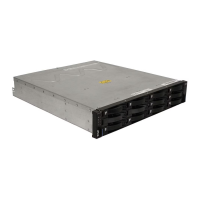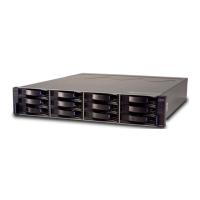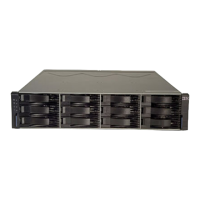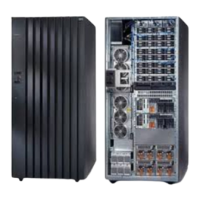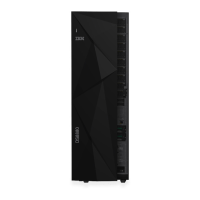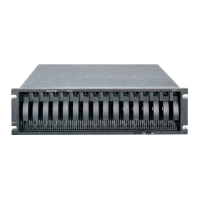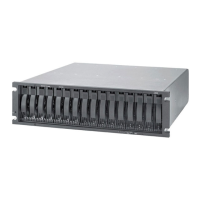7914Admin_Logical.fm Draft Document for Review March 28, 2011 12:24 pm
250 IBM System Storage DS3500: Introduction and Implementation Guide
9.5.3 Change Media Scan Settings
Media scan is a background process enabled by default, that checks logical drives over hard
disk drives for defects by reading the raw data from the disk and writing it back. This detects
possible problems caused by bad sectors of the physical disks before they could eventually
disrupt normal data reads or writes. This process is sometimes known as
data scrubbing.
The media scan runs on all logical drives in the storage subsystem that meet the following
conditions:
1. The logical drive is in an optimal status.
2. There are no modification operations in progress.
3. The Media Scan parameter is enabled.
The media scan continuously runs in the background, using spare cycles to complete its
work. The default media scan is for a scan every 30 days, that is, the maximum time the
media scan has to complete the task. During the scan process, the DS3500 storage
subsystem calculates how much longer the scan process will take to complete, and adjusts
the priority of the scan to ensure that the scan completes within the time setting allocated.
Once the media scan has completed, it starts over again and resets its time for completion to
the current setting. This media scan setting can be reduced. However, if the setting is too low,
priority is given to the media scan over host activity to ensure that the scan completes in the
allocated time. This scan can impact performance, but will improve data integrity in the long
term.
The media scan is enabled for the entire storage subsystem. The system-wide enabling
specifies the duration over which the media scan runs. By default, the media scan process
runs without checking redundancy data. You can optionally specify whether to do a
redundancy check or to stop media scan.
A Media Scan can be considered a surface scan of the hard drives, and a Redundancy
Check scans the data blocks of a RAID 3, 5, or 6 logical drive and compares it against the
redundancy data calculated. In the case of a RAID 1 logical drive, the redundancy scan
compares blocks between copies on mirrored drives.
We have seen no effect on I/O when we use a 30-day setting unless the processor is utilized
in excess of 95%. The length of time that it takes to scan the logical drives depends on the
capacity of all the logical drives on the system and the utilization of the controller.
Table 9-2 on page 251 shows the errors and describes several of the actions that the DS3500
storage subsystem takes as a result of a media scan and redundancy check operations.
Important: Media scan is an option available for logical drive space configured on hard
disk drives. Unused hard disks or hot spares are not scanned.
Note: A media scan is only capable of resolving media errors and data or parity
mismatches. A media scan does not attempt to resolve any other sort of error occurring
during I/O operations.
Important: The media scan must be enabled for the entire storage subsystem and
enabled on each logical drive within the storage subsystem to protect the logical drive from
failure due to media errors. This is the default and recommended configuration.

